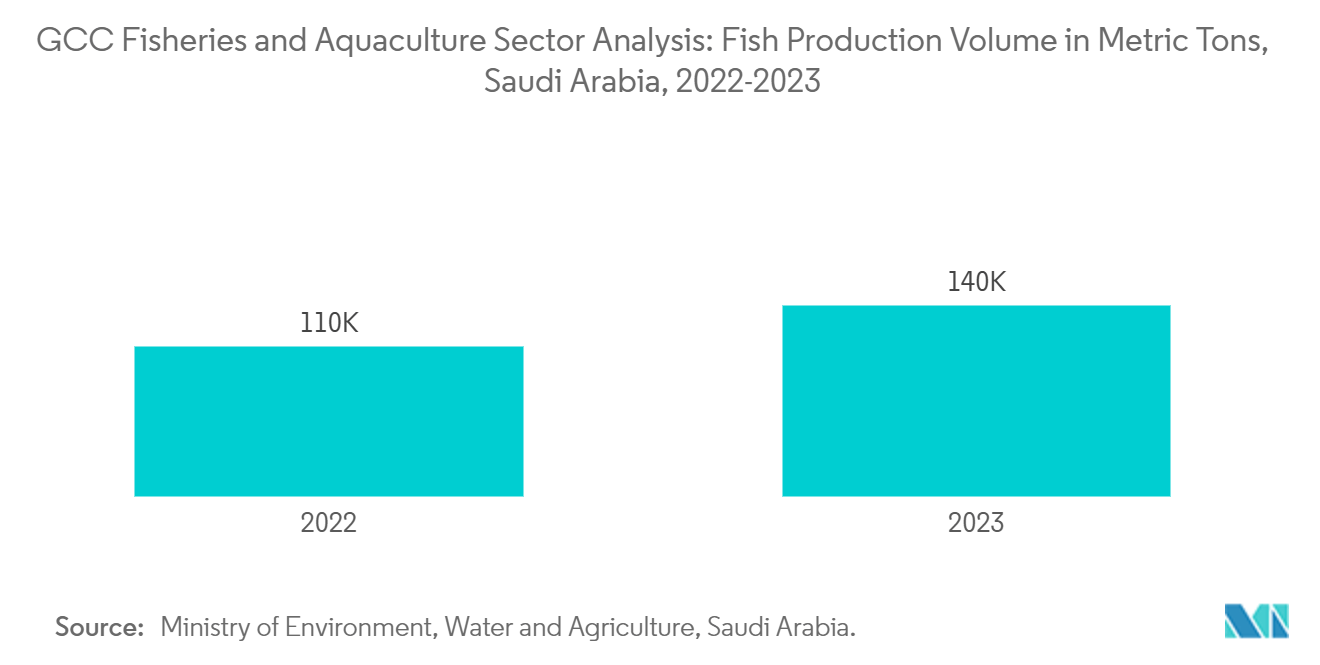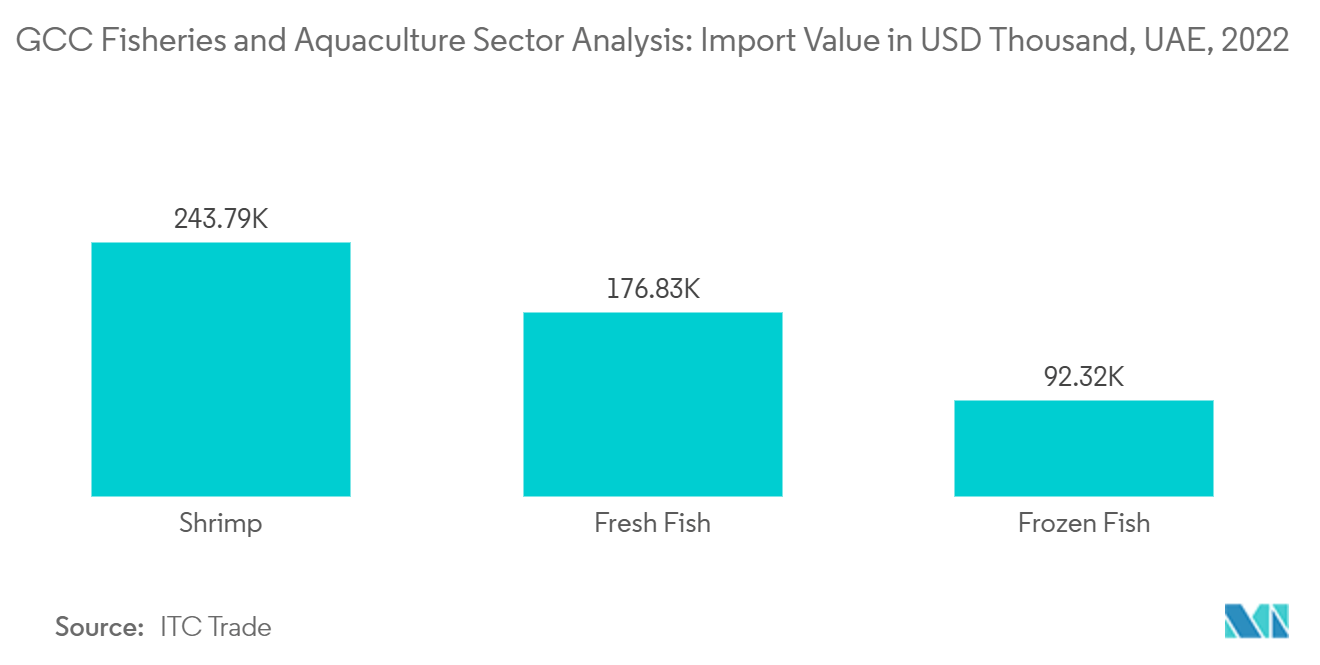Market Trends of Analysis Of The Fisheries And Aquaculture Sector In The GCC Region
Government Initiatives Boost Domestic Fish Production
- Governments in the Gulf region have crafted policies and created favorable investment conditions to elevate fish farming in the area. Key drivers for the region's aquaculture sector development include a heavy reliance on imports, the need to conserve limited freshwater resources, and the potential for export surpluses.
- The Saudi Ministry is pivotal in expanding the aquaculture sector, aiming to meet domestic needs and generate export surpluses. In 2023, Saudi Arabia's aquaculture production hit 140,000 metric tons, increased from 110,000 from 2022, with aspirations to exceed 600,000 metric tons by 2030. Given these ambitions and supportive government policies, the aquaculture industry is poised for growth during the forecast period.
- Oman's Ministry of Agriculture and Fisheries has been heavily investing in the aquaculture sector's growth. In August 2024, the Omani government unveiled a USD 115 million investment plan, introducing 24 new opportunities. These opportunities span the establishment, management, and operation of fish markets, collection centers, shops, marine workshops, and cold storage facilities across various governorates. In another move, Fisheries Development Oman (FDO), the fisheries investment arm of the state-owned Oman Investment Authority (OIA), inked an advisory contract in 2024 with Malta's AquaBioTech Group. AquaBioTech is set to offer a suite of consulting and advisory services, aiding FDO in cultivating a sustainable aquaculture and fisheries sector in Oman, including business strategy formulation and technical due diligence.

United Arab Emirates is the Region's Top Importer
- The United Arab Emirates (UAE) government is focusing on increasing aquaculture projects as it is a viable source for improving the region's food security which is the major concern in the country. Rapid growth and development and the diverse population of the UAE, coupled with the rising consumption of seafood, are likely to be the major factors that is driving the fisheries and aquaculture sector.
- Data from ITC Trademap highlights that shrimp topped the import list, valued at a substantial USD 243,787 Thousand. Other notable imported species encompassed Salmon, Sea Bass, and Sea Bream. Consumers in the UAE show a preference for various fish species. These include small pelagic varieties like sardines and mackerel, as well as larger pelagic types such as tuna. Additionally, species like grouper, emperor, tilapia, and pomfret enjoy significant popularity in the nation.
- Over the past five years, Russia has nearly doubled its fish and seafood shipments to the UAE, rising from USD 3.4 million in 2019 to USD 6.5 million in 2023, as reported by the Analytical Center of the Fisheries Union, Russia. Crustaceans dominate the UAE's imports from Russia. Specifically, crab and shrimp make up 36% of the imports, followed by chilled fish at 20%, canned fish at 17%, frozen fish at 11%, and fish fillets at 7%. In terms of value, frozen Kamchatka crab constitutes nearly 70% of Russian exports, with canned crab at 24%, smoked fish at 4%, and caviar at 3%.


